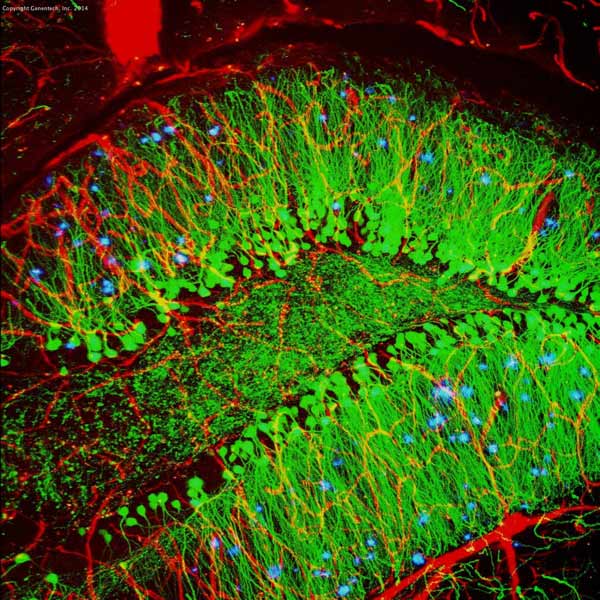
I had just landed at the Dulles International Airport after flying non-stop for five hours from the Pacific to the Eastern Time zone, with a fussy toddler in my lap. It was two in the morning. Tired, hungry, and hauling about five different types of luggage, including a Hummer of a stroller, I was not feeling particularly up beat.
Yet, as I walked through the brightly lit passage on my way to the baggage claim, I was pleasantly struck by the sight of something very familiar adorning the otherwise bare walls- exquisite backlit microscopic images of biological cells and tissues. Suddenly, I was at an art gallery, except that the images were authentic scientific data produced as a result of cutting edge biomedical research by scientists all over. Awe-inspiring pictures capturing the dynamic biological world, not visible to the naked eye, of mitotic cells with dividing DNA, viruses, the brain tissue and bacteria made me stop and take a look.
“Life: Magnified,” is a result of a collaboration between the NIH’s Institute of General Medical Sciences, the American Society for Cell Biology, and the Metropolitan Washington Airports Authority’s Arts Program, and entails a display of 46 eclectic photographs selected from over 600 submissions by prominent researchers.
These images up till now have mostly been exclusive, often appearing in scientific journals or conferences, not readily accessible to laymen. By displaying the images at a venue which sees millions of passengers every year, the airport is contributing to the important task of increasing public awareness of the strides made everyday by researchers in solving the big questions facing us, including discovering cures to devastating diseases. Moreover, the images will inspire curious individuals to enter the world of scientific research. But most importantly, they provide a much-needed boost to fatigued travelers by reminding them of the beauty in the tiny things that surround us.